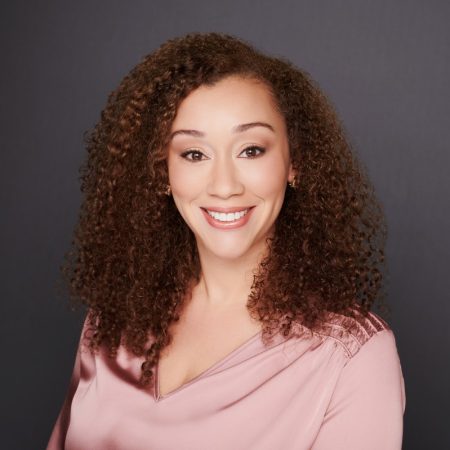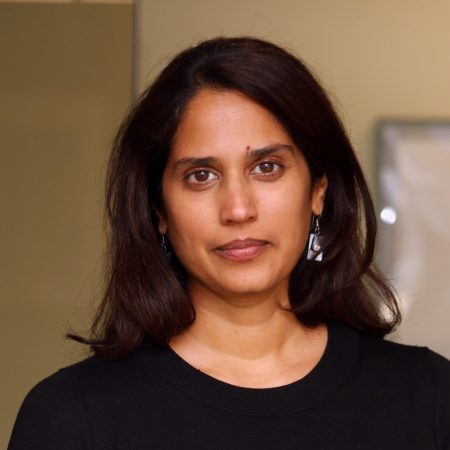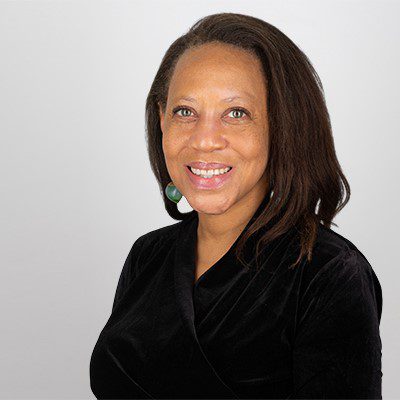Solving HR’s biggest problems this International Women’s Day
Are you ready to create more gender inclusive and equitable workplaces?
Why You Should Care
Today is International Women's Day.
Creating diverse, equitable and inclusive workplaces is much easier said than done.
Experts share best practices.
HR leaders, don’t miss out: Join us in Las Vegas for free as a VIP guest at UNLEASH America.
Every year on 8 March the world marks International Women’s Day (IWD).
While the idea is to celebrate the progress around gender equality and inclusion, IWD is also about highlighting areas where there are persisting inequalities, aka where urgent change needs to happen.
A major area of concern is the workplace. Let’s take a look at the current state of play.
The state of workplace gender equity
Research shows that the past three years have seen some important successes around diversity, equity and inclusion in the workplace.
Bloomberg’s 2023 Gender Equality Index (GEI) found improvement in areas like leadership and talent pipeline, gender pay parity, inclusive cultures and anti-sexual harassment policies.
There were also notable successes around the use of technology to better understand the state of diversity in the organization, and leadership’s role modelling of good behavior on gender equity.
Despite these gains, there remain areas for improvement. IBM and Chief’s latest women in leadership report notes in many cases the perceptions of progress outpace the reality. There remain significant structural barriers and unconscious bias blocking women climbing the ladder at work.
In fact, the research from IBM and Chief found that while there were gains around gender representation at the bottom and very top of talent pipeline, progress at the middle management level (defined as senior vice-presidents and vice-presidents) is yet to reach to pre-pandemic levels.
Bloomberg’s GEI also noted that there was a plateau in progress in the career pipeline. While entry level positions are filled with 50% of women, this declines to 24% for executives.
Even beyond the talent pipeline, there are many ways that the COVID-19 pandemic brought new challenges. McKinsey data shows that women accounted for 56% of workforce exits due to COVID-19 (although they made up 48% of the workforce); creating the largest female-to-male gap in unemployment since 2000.
According to the World Economic Forum, the pandemic undid at least two years of progress around gender equity, pushing the non-governmental organization to conclude that it’ll now take 136 years to close gender gaps (this is up from 100 in 2020).
Driving change from within
Of course, organizations and their HR teams want to improve D,E&I generally in their organizations, but making concrete organization-wide change is hard.
The best place to start tackling HR challenges is to identify what is actually causing progress to stall – what are the main sticking points?
To find out, UNLEASH surveyed our audience of HR leaders. They identified four inter-connected pain points that are hindering success around workplace D,E&I, and particularly around gender.
The first is that although they felt like D,E&I had been talked about more and more since the pandemic, they did feel like there had been real progress. This begs the question how does HR move from campaigns and policies to genuine action?
Second is leadership accountability. Bloomberg’s GEI talked about the need for D,E&I to come from the top, and for leaders to role model good behavior, but what is the right way to do that? How do you incentivize inclusive behaviors from leaders, but also employees?
Unsurprisingly, the gender pay gap came up as a challenge. The latest data from the International Labor Organization shows that globally women earn 20% less than men – this means for every $1 that men earn, their female colleagues only earn 80 cents.
Businesses have a huge role to pay in achieving pay parity, but where should they start? Do they need better analytics to understand the extent of the problem? How do they then close the gap?
The fourth challenge was around technology. What innovative, emerging technology does HR need to look at to truly make their workplaces diverse, inclusive and equitable?
To solve these problems, and help empower leaders drive real change, UNLEASH put these questions to D,E&I experts. Here is their advice.

Kate Palmer, HR advice and consultancy director, Peninsula.
Moving from awareness to action
Many organizations have created policies to aim to create more diverse, inclusive and equitable workplaces. The aim is “to provide women with the platform to be on the same footing as men in the workplace”, Peninsula HR advice and consultancy director Kate Palmer tells UNLEASH.
This could be through having policies that to try to make hiring and promotions fairer, or by introducing anti-harassment training for the entire organization.
But often the issue is actually putting these policies into practice, and producing results. To do this,

Burcin Ressamoglu, CEO, Sodexo Engage.
Burcin Ressamoglu, CEO at Sodexo Engage, calls on HR to be “more intentional” in moving “from merely being aware of the issue to taking bold actions to address it”.
Gartner HR’s director analyst Chandra Robinson agrees. She talks about the need to look at “processes, policy structures”, always ensuring D,E&I commitments and policies are front and center and that the right people are part of the design process.
Danielle Little, director at Peoplism, calls on HR to take time preparing and laying the groundwork before it introduces policies.
She uses a cooking analogy – “before diving into changing a company-wide process, first ensure all of the right ‘ingredients’ are prepared. For example, if your ultimate goal is to make performance reviews more equitable, first ensure your company has clear core competencies identified for all teams”.
All of this plays into the cultural shift that needs to happen to drive gender equity at work. “Active allyship, improved mentorship, sponsorship and equitable progressive plans for women, and gender targets at a senior leadership level” are also key, according to PageGroup’s UK, Middle East and Africa D,E&I director Sheri Hughes.

Jennifer Dole, director and principal analyst, 3Sixty Insights.
However, the culture shift is only complete if HR teams, if organizations “embrace a culture of continuous evolution…to truly shift cultural norms”, according to Robinson.
Hughes agrees, and she warns that “structural changes to a business are required to a make a meaningful difference” – “a switch cannot simply be flipped to make all the changes needed – [instead] companies and leaders must be open to rethinking their traditional models”.
Data from 3Sixty Insights found that a “culture of challenging the status quo” is essential in change management, including around D,E&I. To do this, HR must spend time “evaluating the effectiveness of current…practices to see if they are still fit for purpose”, states the research firm’s director and principal analyst, Jennifer Dole.
Establishing leadership accountability
Of course, cultural change at an organization isn’t possible without leadership buying into the importance of D,E&I.

Sheri Hughes, UK, Middle East and Africa D,E&I director, PageGroup.
Thankfully there has been real progress here – the business case for D,E&I is now undeniable, and leaders are keen to reap those benefits. The issue is keeping that momentum up, according to the UNLEASH survey.
Hiring diverse leaders, and promoting existing female employees into leadership position, is part of the answer. PageGroup’s Hughes suggests “consistently reviewing leadership activity and behaviors can unlock new avenues for representation”.
Ultimately, the CEO and the C-Suite “must walk the talk – treat everyone equally, no matter their background, and show they expect inclusive behavior from every single person at the company”, notes Sodexo Engage’s Ressamoglu.
Career coach Jenny Garrett OBE agrees: “Role-modelling inclusive behavior is essential; it is less about what is said, and more about what is embodied”. If the C-Suite is not doing enough, other employees may “use that as an excuse” to not change their own behaviors, so “C-Suite leaders are directly responsible for culture change stalling”.

Chandra Robinson, director analyst, Gartner HR.
To ensure leaders are actually being genuine and taking real action around D,E&I, accountability for leaders is essential; “Implementing and a maintaining a robust, effective D,E&I culture requires commitment, ownership and accountability”, notes Ressamoglu.
For Gartner’s Robinson, accountability must be tied to reward and recognition.
While D,E&I are important, “to drive the right behaviors, you have to hit people where it matters most” and “that is compensation”.
Robinson asks: “Why should leaders continue to be promoted when they’re not being inclusive?” Instead, organizations need to “amplify and reward those wonderful employees who are doing the right thing”.
Minal Bopaiah, founder and principal at Brevity & Wit, adds it is important that accountability isn’t about “punishment or shaming”.
“Accountability is the ability to own your own mistakes, apologize and make amends. Accountability presupposes that a human being is capable of growth, and therefore we need to encourage reflection and offer offenders an opportunity to make amends” and learn, adds Bopaiah.

Danielle Little, director, Peoplism.
Closing the pay gap
Paying women the same as men for doing the same job sounds easy, but because of entrenched inequity, there remain huge issues here and there is no quick fix.
The first thing HR teams and employers need to do to move towards pay parity is actually collect and analyze their pay data.
This helps HR to figure “out what variables reasonably impact compensation and seeing whether there are any unexplained differences” between men and women, according to Peoplism’s Little.
Once they are aware of the problem (and the reasons why), they can then make targeted actions to combat it for their existing and future employees.
Peninsula’s Palmer calls on HR to remove the “requirement to provide a salary history when recruiting [to] give women a much firmer footing in pay negotiations”.

Minal Bopaiah, founder and principal, Brevity & Wit.
Employers can go one step further by “removing negotiating completely, and simply setting a fixed rate of pay for all” to improve transparency, trust and employee engagement. A similar approach can be taken for promotions and pay rises.
Bopaiah agrees on the need to “stop valuing negotiation” because it “is a practice favored by men (and an example of how work is designed for male comfort”.
“Posting salaries is also just smart – it saves both the applicant and hiring manager time because people know right away whether the job will meet their financial needs or not”.
Robinson from Gartner notes: “It is almost as simple as just do the right thing” and compensate everyone fairly based on industry benchmarks.
Leaning on new technologies
The final challenge identified by the UNLEASH survey was how to use technology well to drive D,E&I success.
Companies need to lean into technology in the realm of technology.
Applied CEO Khyati Sundaram tells UNLEASH: “We can’t stamp out stigma overnight, but we can prevent it from playing a role in hiring decisions” – for instance, using technology that anonymize or write more inclusive job applications, or doing role-relevant skills assessments (the latter is the “most accurate predictor of candidate performance”, according to Sundaram).
“Using skills tests instead of CVs can increase the number of women hired into senior roles by almost 70%; addressing the imbalance in C-Suites which is ensuring that gender pay gaps persist”.

Khyati Sundaram, CEO, Applied.
HR teams also need to look beyond recruitment tools, and figure out how to use technology to solve the issues they have around promoting women in their organization.
Palmer calls on companies to invest in learning and development technology – this “can help level the playing field, ensuring everyone has access to the same tools and opportunities for upskilling, which can be an effective way to prepare people for promotions”.
Robinson from Gartner HR further notes a potential game changing technology is talent marketplaces, which are transforming the employer-employee relationship. 3Sixty Insight’s Dole agrees, and says she is seeing a lot of experimentation with these platforms at the moment.
“Traditionally organizations have relied heavily on Human Capital Management suites”, which require a lot of manual data input. “The problem with this approach is it can be a bit limiting for the employee”, whereas talent marketplaces are more “adaptive, resilient and agile”.
They give all employees, no matter their seniority, visibility over development opportunities that are key to promotions and pay rises.
However, Peoplism’s Little is clear “there is simply no silver bullet technology solution that can solve all the issues”.

Jenny Garrett, career coach and author.
To get the most out of technology, “you must have a strategy in place and a clear understanding of what that technology will help you achieve”, including how it links with wider D,E&I goals.
“The important thing is that new tools are not parachuted in. Hiring teams must be properly trained and support to ensure that fairer ways of hiring stick”, adds Sundaram.
Ultimately, culture change is the key component to success around D,E&I. “Hire differently, manage differently, promote differently to unlock the full potential of your workforce,” concludes Garrett. “For everyone to win, nobody has to lose.”
Don’t miss our exclusive LIVE webinar taking place on International Woman’s Day on March 8. Our speakers will be sharing their experience of gaining the right digital skills, at the right time, in order to succeed in their own careers in the male-dominated arena of tech.
Sign up to the UNLEASH Newsletter
Get the Editor’s picks of the week delivered straight to your inbox!

Chief Reporter
Allie is an award-winning business journalist and can be reached at alexandra@unleash.ai.
